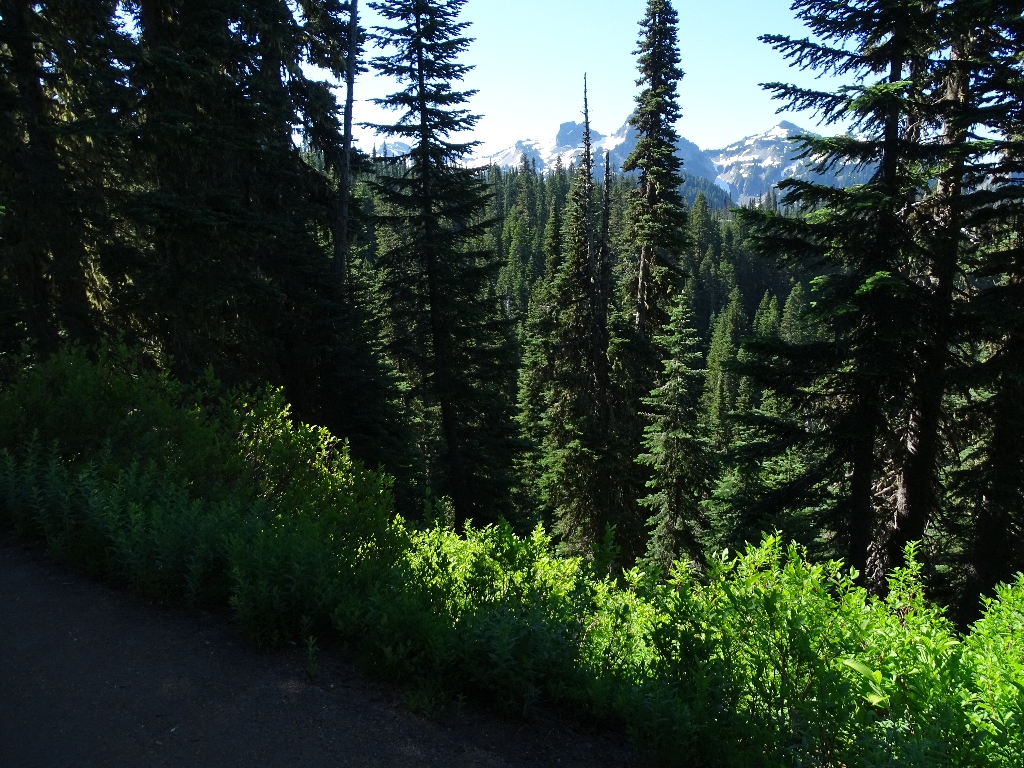
Mount Rainier is built on the foundations of much older mountains. Long before Mount Rainier formed, volcanoes 26-28 million years ago spread great blankets of hot pumice and ash over the landscape. Some flows were 350 feet thick. Heat trapped in the flows remelted the particles, forming the hard rock, known as welded tuff, of the Stevens Ridge Formation, which forms the peaks of the Tatoosh Range visible to the south. From beneath these rocks a large blob of magma many miles across pushed upward about 18-14 million years ago. Before it reached the surface, the molten rock cooled and hardened into a "salt and pepper" crystalline rock, known as granodiorite – a relative of granite. Granodiorite forms the base rocks under both the Tatoosh Range and Mount Rainier. As the entire Cascade Mountain Range rose, severe erosion carved rocks of the Tatoosh into the rugged ridges and deep valleys we see. In the last million years, repeated glaciation shaped the range into a series of horns and cirques.
Is there something we missed for this itinerary?
Itineraries across USA

Acadia

Arches National Park

Badlands

Big Bend

Biscayne

Black Canyon Of The Gunnison

Bryce Canyon

Canyonlands

Capitol Reef

Carlsbad Caverns

Channel Islands

Congaree

Crater Lake

Cuyahoga Valley

Death Valley

Dry Tortugas

Everglades

Gateway Arch

Glacier

Grand Canyon

Grand Teton

Great Basin

Great Smoky Mountains

Guadalupe Mountains

Haleakalā

Hawaiʻi Volcanoes

Hot Springs

Indiana Dunes

Isle Royale

Joshua Tree

Kenai Fjords

Kobuk Valley

Lassen Volcanic

Mammoth Cave

Mesa Verde

Mount Rainier

North Cascades

Olympic

Petrified Forest

Pinnacles

Rocky Mountain

Saguaro

Shenandoah

Theodore Roosevelt

Virgin Islands

Voyageurs

White Sands

Wind Cave

Yellowstone

Yosemite

Zion